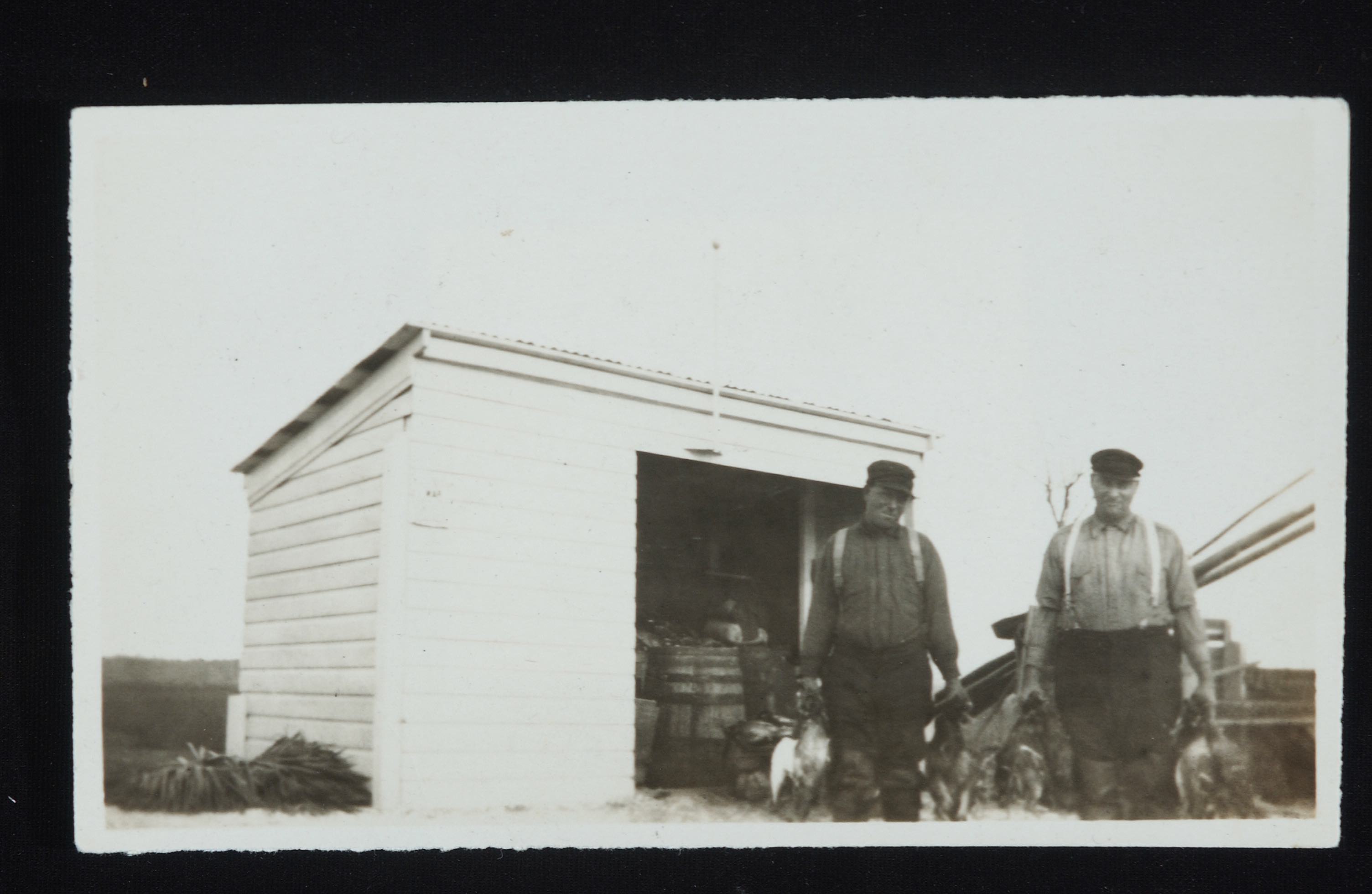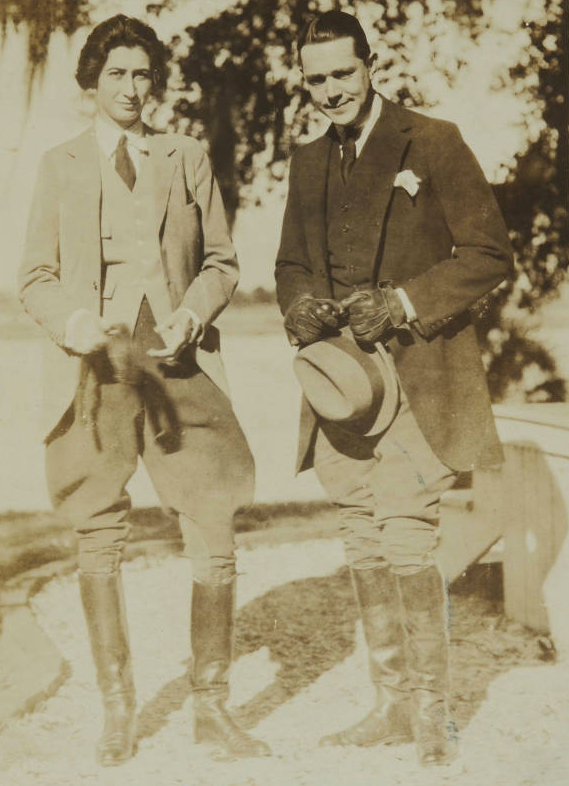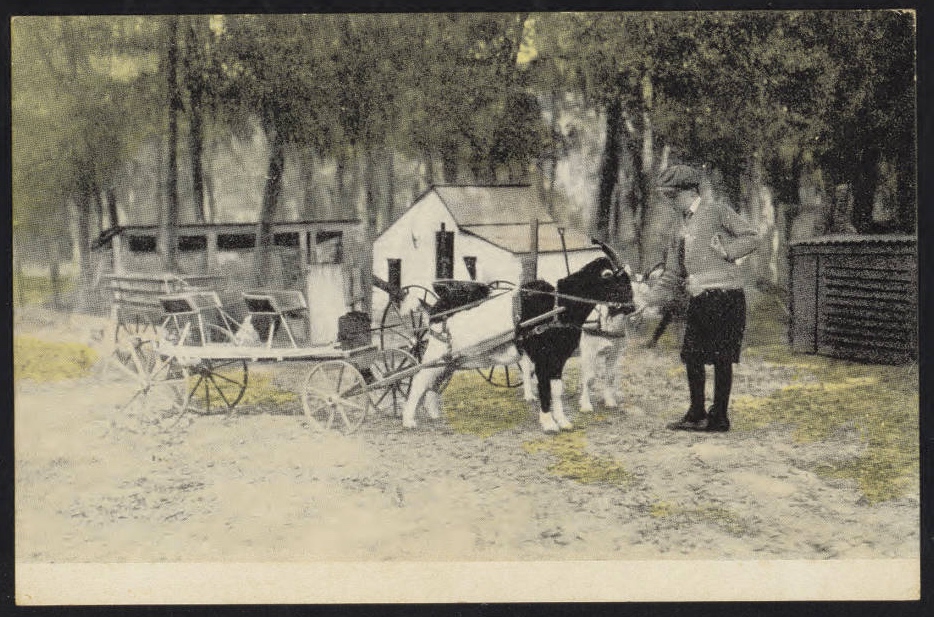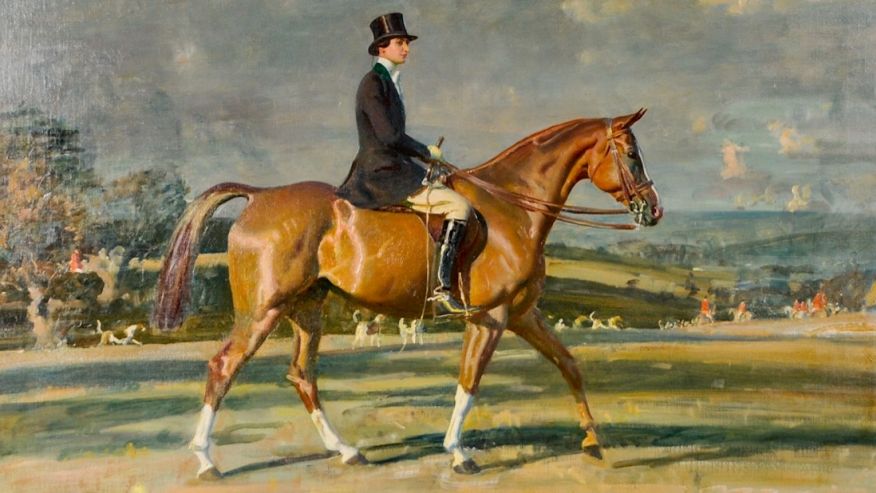In this c.1910 photo Sawney and Hucks Caines, expert hunters and fishermen, prepare to clean game from a Baruch duck-hunting party. The Caines brothers – including Ball, Bob and Pluty Caines in addition to Sawney and Hucks – were descendants of longtime residents of Hobcaw, dating to the eighteenth century. With the exception of Ball Caines, whom Baruch prosecuted for poaching, they served as hunting guides for Bernard Baruch and his guests.

The Caines’ expertise helped hunters bring down 100 ducks in a morning, prior to the creation of federal game limits in 1918. Hucks Caines’ grandsons, Jerry and Roy Caines followed in the family tradition, working as commercial fishermen and shrimpers, as they explain in this video.
There are seven Baruch guest books covering the period from December, 1911 through August, 1946. Guests who wrote their names in the books include artist Louis Aston Knight; Robert and Evangeline Johnson, children of Johnson & Johnson founder Robert Wood Johnson; Harry Whitney, wealthy financier, sportsman and husband of Gertrude Vanderbilt; Richard Irvine Manning, Governor of South Carolina from 1915 - 1919; newspaperman Ralph Pulitzer, publisher of the New York World and the Evening World; and Herbert Bayard Swope, journalist and member of the Algonquin Round Table.
Of course there were many others whose names don’t appear in the log: Josephus Daniels, Jack London, Rockwell Kent, Clare and Henry Luce, the Prince of Monaco, Winston Churchill - the list goes on. At Hobcaw Barony there were rarely fewer than fifteen or twenty guests at dinner.
When he visited in 1921, Robert Wood Johnson II wrote in the guest book, "A most marvelously organized shooting lodge. The greatest ducking." In this photograph he is standing with Belle Baruch near the water at Hobcaw.

In 1896 President Grover Cleveland came to the Hobcaw area to hunt ducks as a guest of the Annandale Gun Club. Early one morning local guide Sawney Caines escorted President Cleveland to a stand in the marsh. The President, a large man, had no familiarity with South Carolina’s infamous “pluff mud,” the sticky, deep, marsh muck. In this video clip, Sawney Caines' great-nephews, Roy and Jerry Caines, describe what happened to the President.
This “No Trespassing” sign from 1896 marked portions of North Inlet leased for hunting by Hartwig Nathaniel Baruch, older brother of Bernard. Born in 1868, Hartwig, known as Harty, was named for his great-grandfather, Rabbi Hartwig Cohen. Isabelle Baruch intended her first-born son to become a rabbi like his namesake, but Harty chose to study acting instead and had a career, albeit short-lived, on the stage.
His mother, seeing no future for him in the theater, sought a way to steer him toward a different vocation. In 1897, when Bernard Baruch bought a seat on the New York Stock Exchange she suggested he give it to his brother, to get him started as a financier. Bernard did give Hartwig the stock exchange seat, and Hartwig became a partner with Bernard, Herman and Sailing in Baruch Brothers, an investment bank and stock brokerage. It was Hartwig, along with the Baruchs’ Kaminski cousins from Georgetown, who introduced Bernard to Hobcaw.

The 12 postcards in this collection show scenes of life at Hobcaw Barony. Postcards have an interesting history and have been regulated by the federal government since their inception. In the U.S., the first postcard was copyrighted in 1861, the year Congress passed an act allowing privately printed cards. Sometime between 1907 and 1915 people began producing “real photo” postcards, such as these, using a Kodak “postcard camera” that took a picture and printed a negative with the dimensions and design of a postcard. The Baruchs gave these postcards out as keepsakes. In this card, Bernard Jr. is feeding two goats that are hitched to carts.

The small paintings of horses above the coat rack are by Florence Mabel Hollams, who signed her work F.M. Hollams. She was a well-known British artist, noted for paintings of dogs and horses on wood panels with no backgrounds, keeping the wood grain visible. Popular during the first three decades of the twentieth century, she studied in Paris at Academie Julian and exhibited at the Royal Academy of Art from 1897-1912. Sir Alfred Munnings, who painted Belle Baruch astride Souriant III, also exhibited at the Royal Academy, and it is likely he and Hollams were acquainted.
Munnings' portrait, seen below, disappeared from Hobcaw in 2003, along with 16 other artworks. 11 of the missing artworks, including the Munnings portrait and seven of Audubon’s elephant folio prints from “Birds of America,” were recovered in April, 2016, when they turned up at an auction house as part of an estate sale.
